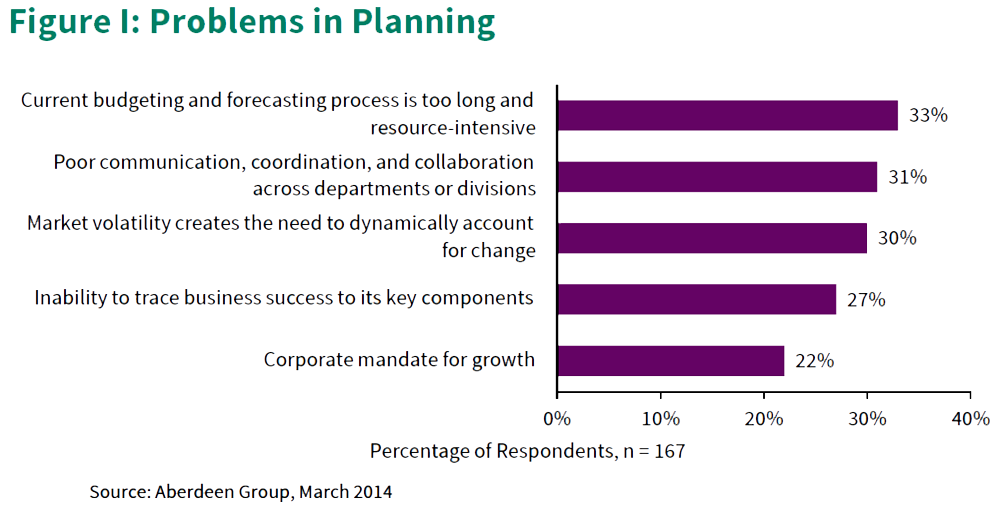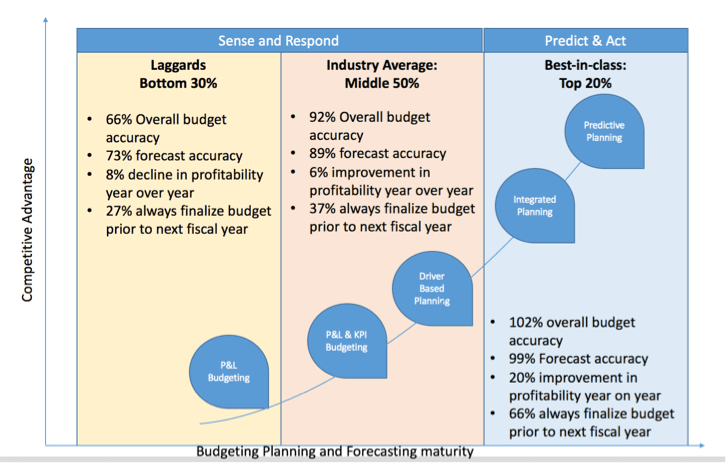

Let’s face it, when it comes to traditional planning, budgeting and forecasting, business processes often struggle to keep pace with rapidly evolving digital markets and economic volatility, which can then wreak havoc on internal processes. In order to remain relevant, companies need to make strategic improvements to deliver accurate and timely plans, budgets and forecasts. This is fundamental for an intelligent and effective management function, and can play a pivotal role in enabling organisations to set themselves apart from the competition.
Unfortunately, pure guesswork and sticking to the norm will just not cut it. For the purposes of this article we assume an investment in a enterprise planning tool has already been made. If this is the case then the application of advanced analytics can help carve out a competitive differentiator.
Before we look at how advanced analytics can support this process, let us have a look at some of the common problems faced in organisational planning, budgeting and forecasting. (Sourced from Aberdeen Group report, “Improving Planning, Budgeting & Forecasting with Advanced Analytics” March 2014)

I am sure that almost all organisations are familiar with the aforementioned issues in some way shape or form, but their impact on organisational profitability is often neglected. Below is a maturity curve overlaid with some key statistics from the same Aberdeen report.

To truly go beyond standard budgeting practises, we have to include advanced analytical capabilities.
Factors such as: number of customers, volumes, number of calls, number of transactions, amount of clicks, and number of employees and machine cycles, are all examples of operational metrics which can be used to determine financials. Using a rules-based approach to modelling requires less manual input, while simultaneously reducing errors and saving time.
Focus on detail where it matters: plan in more detail for the short-term and less detail further out, unless your predictive capabilities are proven and your budget assumptions are not subject to volatility.
In an unstable and sometimes volatile marketplace, drastic changes in resource levels, budget constraints, and strategies are inevitable. A flexible budget that takes into account performance under alternative (what-if) scenarios, will serve your organisation better than one that ignores the future and risks, and invests too much time into detailing the budget based on what happened in the past.
While the length of time a budget should take varies by the size and complexity of an organization, the rule of thumb is that your budget should take no more than 30 days to prepare. Anything more than this you are at risk, consuming valuable business resources.
Not only can analytics speed up the decision making process by making your data more accessible, it can also highlight trends and exceptions, foster a common understanding of the various drivers of performance and their relationship to future outcomes, and help develop new insights based on the extensive use of data, statistical and quantitative analysis, and predictive modelling.
As you consider strategies to increase organisational profitability, remember that an optimised planning process leveraged as an up-to-date decision-making tool rather than a negotiation exercise, can yield results far exceeding expectations.
Copyright © Tridant Pty Ltd.